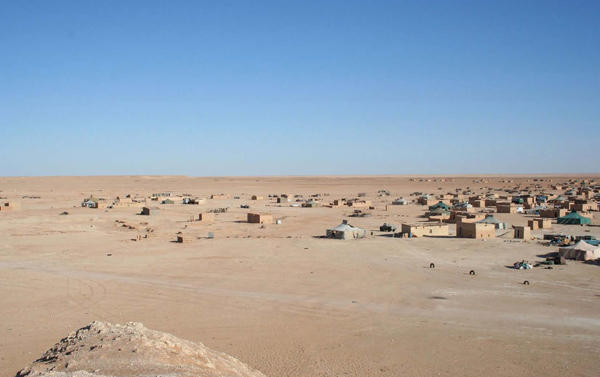REFUGEE CAMPS of the Western Sahara 2011

Manuel Herz
with
Franziska Biner, Anna Ebneter, Hans Leidescher, Monica Magnone, Jonas Wirth, Diana Zenklusen
and
Jaques Herzog, Pierre de Meuron, Charlotte von Moos, Shadi Rahbaran
Camps
Refugee camps have been described as the spatial materialization of the state of emergency. In this sense they can be seen as the purest transformation of politics into space – or, as a replacement of politics by space. Refugee camps are temporary camps, erected by governmental or non-governmental organizations to protect and shelter refugees. These camps have become the place of dwelling for millions of refugees in Africa and Central Asia. The project aims at studying the urban and architectural dimen- sion of these refugee camps, and the role that our profession of architecture has within the context of forced migration, with the case study of the camps erected by refugees from the Western Sahara in the border area of Southern Algeria.
Western Sahara
The Western Sahara, a former Spanish colony, is a country on the western edge of the African continent. 1975, on the eve of Franco’s rule and with the departure of the Spanish administration it was invaded by Moroccan and Mauritanian troops. Follow- ing a period of guerilla warfare between the local ‘Sahrawi’ population and the invaders, and the subsequent withdrawal of the Mauritanian army, Morocco has installed itself as an occupying force over the largest extent of the territory. The beginning of the warfare also saw the flight of tens of thousands of refugees over the border into Algeria, a historical ally of the Sahrawis, and the establishment of four refugee camps on Algerian territory, near the border zone. Since the 1970s these refugee camps have de- veloped into some of the largest urbanized settlements within the Saharan Desert, now housing approximately 170.000 refugees amongst five camps. In 1991 military conflict between the Sahrawis and the Moroccans stopped, with a UN peacekeeping mission (MINURSO) overseeing the ceasefire. The occupation of the Western Sahara by Morocco, though, has been ongoing ever since.
PEOPLE: PROF. JACQUES HERZOG, PROF. PIERRE DE MEURON, CHARLOTTE VON MOOS, SHADI RAHBARAN, MANUEL HERZ

